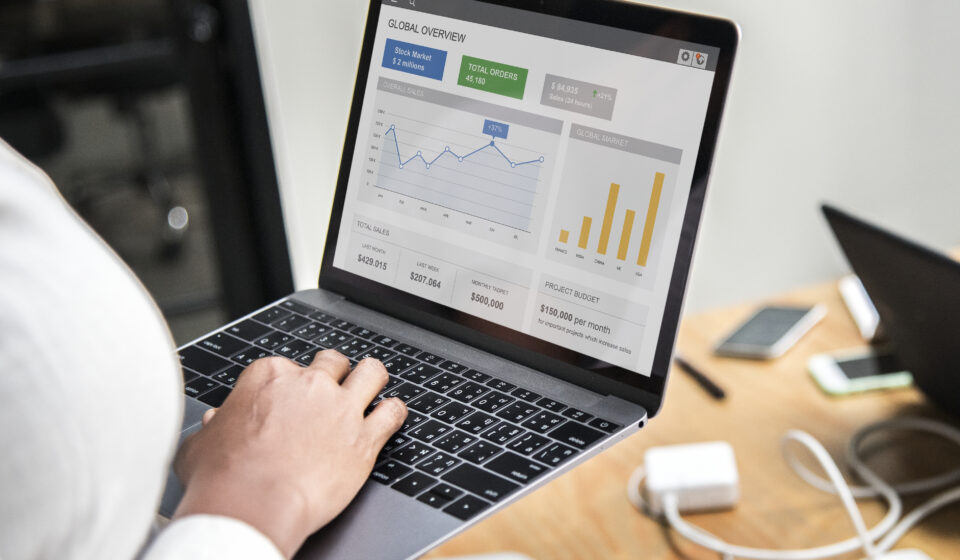
How to Increase Conversion Rate on Your Store (2025 Guide)
In the competitive world of dropshipping, generating traffic is just half the battle. The real win? Converting that traffic into paying customers. A store with 10,000 monthly visitors and a 1% conversion rate earns less than a store with 1,000 visitors and a 5% conversion rate. That’s why optimizing your conversion rate is crucial to growing your revenue without increasing your ad spend.
Table Of Content
- 1. What Is Conversion Rate?
- 2. Why Conversion Rate Optimization (CRO) Matters in Dropshipping
- 3. Common Reasons for Low Conversion Rates
- 4. How to Increase Conversion Rate – 12 Proven Strategies
- ✅ 1. Optimize Your Store’s Speed
- ✅ 2. Use High-Converting Product Pages
- ✅ 3. Implement Urgency & Scarcity Tactics
- ✅ 4. Simplify Your Checkout Process
- ✅ 5. Add Trust Signals
- ✅ 6. Use Popups (Wisely) for Exit Intent or Discounts
- ✅ 7. Leverage Social Proof
- ✅ 8. Offer Live Chat or Instant Support
- ✅ 9. Mobile Optimization is Non-Negotiable
- ✅ 10. Upsell & Cross-Sell Smartly
- ✅ 11. Run A/B Tests Regularly
- ✅ 12. Use Retargeting to Recover Visitors
- 5. Tools to Boost Your Store’s Performance
- 6. Real-Life Example: What I Learned Running a Dropshipping Store
- 7. Pros and Cons of Conversion Rate Optimization
- 8. Conclusion: Start Your Dropshipping Business Journey Today
- Remember
- 🚀 Start Your Dropshipping Business Journey Today.
In this in-depth guide, we’ll explore practical strategies backed by data, tools, and real-world experience to help you increase the conversion rate on your dropshipping store in 2025.
1. What Is Conversion Rate?
Your conversion rate is the percentage of website visitors who complete a desired action — most often, making a purchase.
Formula:(Conversions / Total Visitors) x 100 = Conversion Rate
If 100 people visit your site and 3 make a purchase, your conversion rate is 3%.
2. Why Conversion Rate Optimization (CRO) Matters in Dropshipping
In dropshipping, you typically operate with slim profit margins and invest heavily in paid ads (Facebook, TikTok, Google). CRO helps you:
- Get more value from every visitor
- Reduce customer acquisition costs
- Boost ROI without increasing ad spend
According to Shopify, the average ecommerce conversion rate in 2024 was 1.5% to 3%. Top-performing stores often hit 4–6%, especially when well-optimized.
3. Common Reasons for Low Conversion Rates
Before optimizing, it’s crucial to identify what’s going wrong. Some common culprits:
- Slow website speed
- Confusing navigation
- Lack of trust signals
- Weak product descriptions
- Overcomplicated checkout process
- Mobile-unfriendly design
- No urgency or scarcity triggers
4. How to Increase Conversion Rate – 12 Proven Strategies
Let’s break down the most effective techniques you can apply starting today.
✅ 1. Optimize Your Store’s Speed
A delay of just 1 second in page load time can reduce conversions by 7% (Statista). Use tools like Google PageSpeed Insights or GTmetrix to test speed.
Tips:
- Compress images (use TinyPNG or Shopify’s image optimization)
- Use fast themes (e.g., Dawn for Shopify)
- Avoid heavy pop-ups or third-party apps that slow your store
✅ 2. Use High-Converting Product Pages
Your product page is your sales rep. Make sure it’s polished.
What to include:
- Clear, benefit-focused titles
- High-quality images & videos
- Detailed product descriptions (use bullet points)
- Social proof (customer reviews, ratings)
- Clear price and CTA (Add to Cart or Buy Now)
Example: A pet accessories dropshipping store increased conversions by 25% by simply switching to lifestyle images showing pets using their products.
✅ 3. Implement Urgency & Scarcity Tactics
Scarcity drives action. Use these ethically:
- “Only 5 left in stock!”
- Countdown timers for limited-time offers
- “15 people are viewing this product now”
Apps like Hurrify or Ultimate Scarcity Pro can help (Shopify compatible).
✅ 4. Simplify Your Checkout Process
The more steps between your customer and the “Buy” button, the more chances they’ll bounce.
Do this:
- Offer guest checkout
- Reduce form fields
- Auto-fill options for address/payment
- Accept multiple payment methods (PayPal, credit cards, Apple Pay)
✅ 5. Add Trust Signals
People buy from stores they trust.
Trust-building elements:
- SSL certificate (https)
- Money-back guarantee
- Secure checkout icons
- Clear return & shipping policy
- Display payment badges and verified reviews
✅ 6. Use Popups (Wisely) for Exit Intent or Discounts
Popups can work wonders — if done right.
What works:
- Exit-intent popups (“Wait! Here’s 10% off”)
- Email collection popups with value offers
- Time-based popups with delayed triggers
Tools: Privy, OptinMonster, Klaviyo for email integration.
✅ 7. Leverage Social Proof
Nothing builds credibility like other customers’ feedback.
- Add reviews with photos (Loox, Judge.me)
- Show “Recent Purchases” notifications (Fomo, Sales Pop)
- Include UGC (User-Generated Content) from Instagram
✅ 8. Offer Live Chat or Instant Support
A quick answer can save a lost sale.
- Use Tidio or Chatra for automated + live chat
- Add FAQs to product pages
- Enable chatbots for common queries
✅ 9. Mobile Optimization is Non-Negotiable
Over 70% of online shoppers use mobile (Forbes). Your store must look and work perfectly on phones.
Test this:
- Tap targets should be thumb-friendly
- Fonts must be readable
- Buttons must be prominent
✅ 10. Upsell & Cross-Sell Smartly
Make your average order value (AOV) work harder.
- Show “Frequently Bought Together”
- Use post-purchase upsells (Zipify, ReConvert)
- Offer free shipping thresholds (“Get free shipping on orders over $50!”)
✅ 11. Run A/B Tests Regularly
Test headlines, CTA buttons, layouts, and images to find what converts best.
Tools: Google Optimize, Convert, VWO
Real-life note: After A/B testing 2 product page headlines, one of my dropshipping clients improved conversions by 17% by using emotional copy vs. technical copy.
✅ 12. Use Retargeting to Recover Visitors
Most visitors won’t convert on the first visit. Retargeting ads can bring them back.
Use Facebook Pixel or Google Tag Manager to track and re-engage:
- Abandoned cart campaigns
- Product view reminders
- Limited-time return offers
5. Tools to Boost Your Store’s Performance
Here are some trustworthy tools you should consider:
| Category | Recommended Tools |
|---|---|
| Store Platform | Shopify, WooCommerce |
| Product Sourcing | AliExpress, Spocket, Zendrop |
| Email Marketing | Klaviyo, Mailchimp |
| Social Proof & Reviews | Loox, Judge.me |
| CRO & Popups | OptinMonster, Privy, ReConvert |
| Analytics & A/B Testing | Google Analytics, VWO, Google Optimize |
| Customer Support | Tidio, Chatra |
6. Real-Life Example: What I Learned Running a Dropshipping Store
In 2021, I launched a fitness gear dropshipping store using Shopify and Oberlo. My first month’s traffic was decent — around 2,000 visitors — but I only made 12 sales.
What went wrong?
- My product pages had poor descriptions
- The checkout process had 4 steps
- I had zero reviews or trust badges
After implementing just 4 changes (improved descriptions, added Loox reviews, simplified checkout, and offered PayPal), my conversion rate increased from 0.6% to 2.4% in two months. Sales quadrupled without increasing my ad budget.
Key Lesson: Traffic without trust and UX = lost money.
7. Pros and Cons of Conversion Rate Optimization
Here’s a quick overview:
| Pros | Cons |
|---|---|
| Increases sales without more traffic | Time-consuming if done manually |
| Reduces cost per acquisition (CPA) | Results may take weeks to show |
| Enhances customer experience | Requires testing and data analysis |
| Boosts brand credibility and retention | Some tools may have monthly costs |
8. Conclusion: Start Your Dropshipping Business Journey Today
Increasing your conversion rate isn’t about overnight hacks or guesswork. It’s about understanding your customers, testing consistently, and improving user experience at every touchpoint.
By implementing even a few of the strategies outlined above — especially if you’re just starting or scaling your dropshipping store — you’ll set a strong foundation for long-term success.
Remember:
- Keep your store fast, mobile-friendly, and user-focused.
- Build trust and remove buying friction.
- Use tools and analytics to make data-backed decisions.
“Success in dropshipping business isn’t about luck—it’s about learning, testing, and staying consistent. Start small, think big, and never stop optimizing.”
If you’re serious about building a high-converting dropshipping store in 2025, start applying these tips today. And if you found this post helpful, feel free to share it with your fellow entrepreneurs or bookmark it for your own growth journey.





